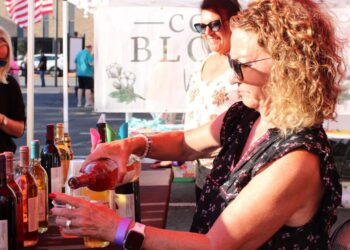As typical in Oklahoma we go straight from one season of extreme to the next. This week it is Heat! And this is one you need to take some precautions for.
The CDC reports that nearly 2,300 people died in 2023 contributed to heat related illness in in the United States. That’s more deaths than all other weather events combined. And those numbers are on the rise – the highest in the last 45 years.
Oklahoma has had 145 heat related deaths in the last 10 years, so this is a problem that hits close to home.
Many factors in the environment have an impact on our body temperature — air temperature and sunlight affect our skin temperature. Humidity affects sweating and cooling. Wind speed can blow away heat from our bodies and helps sweat evaporate which cools us down.
To determine how much stress heat is putting on our bodies, scientists combine all these factors together into one measurement. Two of the most common “feels like temperatures” are the Heat Index and Wet Bulb Globe Temperature.
The Heat Index is often referred to as the “feels like” temperature. It estimates how hot the conditions “feel” to our bodies when we consider humidity along with air temperature. In humid places, the Heat Index is a better indicator of heat stress than the air temperature, but it only addresses what conditions are like in the shade. This is a major limitation since many outdoor activities and work do not occur in the shade. The Heat index also doesn’t account for wind speed and how that cools our bodies down.
These issues can be addressed by using a different measurement, such as wet bulb globe temperature (WBGT).
WBGT tells us how hot it is based on the (1) temperature, (2) humidity, (3) wind speed, and (4) sunlight. It was developed by the US military in the 1950s to prevent heat-related deaths in training camps. Today it is used in some workplaces and for some sports, such as high school football in a few US states.
High temperatures and humidity stress the body’s ability to cool itself, and heat illness becomes a special concern during hot weather. There are three major forms of heat illnesses: heat cramps, heat exhaustion, and heat stroke, with heat stroke being a life threatening condition.
Oklahoma State’s Emergency Health Services department offers some suggestions for identifying, preventing and treatment of the heat related illness.
Heat cramps are muscle spasms which usually affect the arms, legs, or stomach. Frequently they don’t occur until sometime later after work, at night, or when relaxing. Heat cramps are caused by heavy sweating, especially when water is replaced by drinking, but not salt or potassium. Although heat cramps can be quite painful, they usually don’t result in permanent damage. To prevent them, drink electrolyte solutions such as Gatorade during the day and try eating more fruits like bananas.
With a little caution and common sense, you can avoid heat illnesses and still enjoy all of the fun that the Oklahoma summer has to offer.
Want to reach a local audience and grow your business?
Our website is the perfect platform to connect with engaged readers in your local area.
Whether you're looking for banner ads, sponsored content, or custom promotions, we can tailor a package to meet your needs.
Contact us today to learn more about advertising opportunities!
CONTACT US NOW






